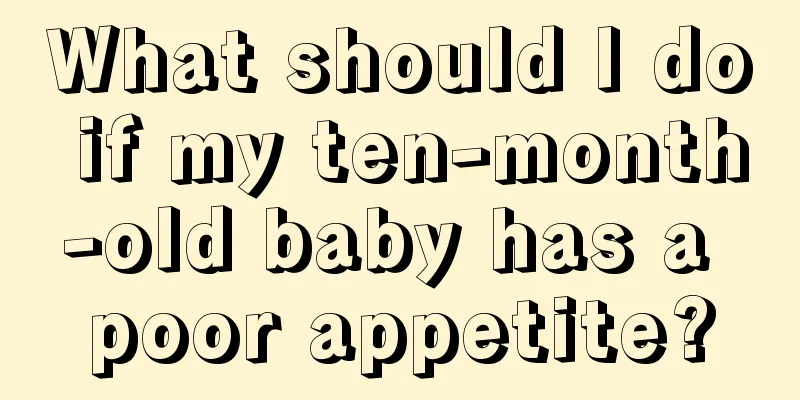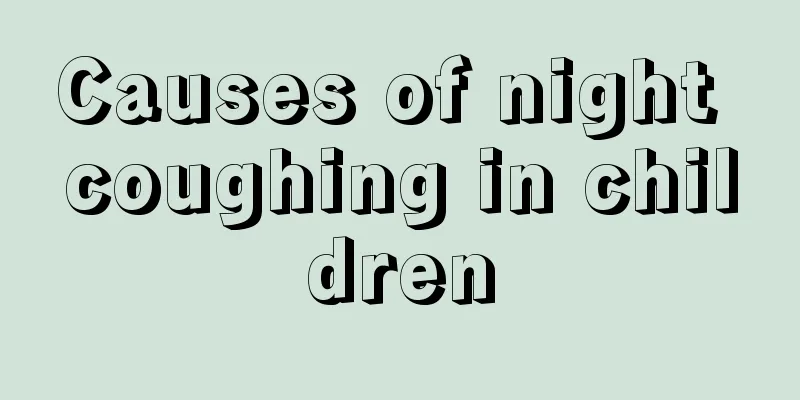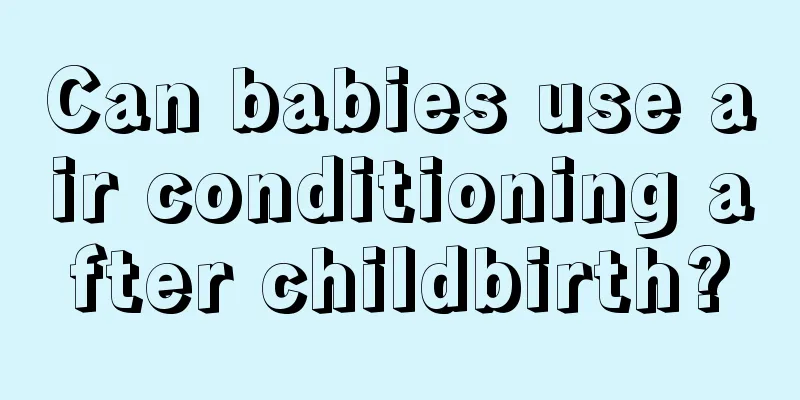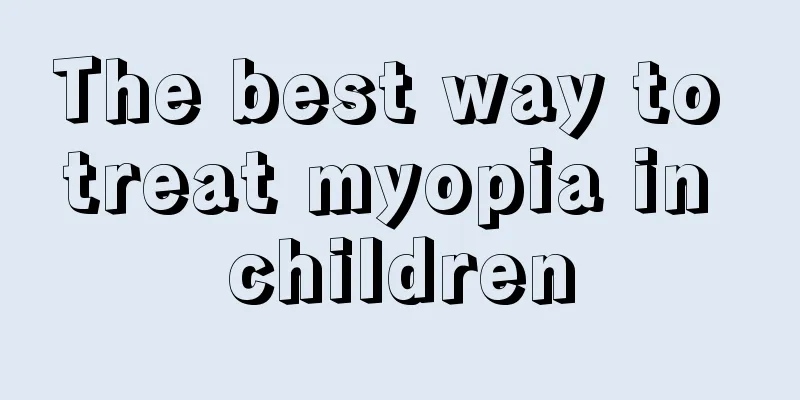Symptoms of brain injury in babies
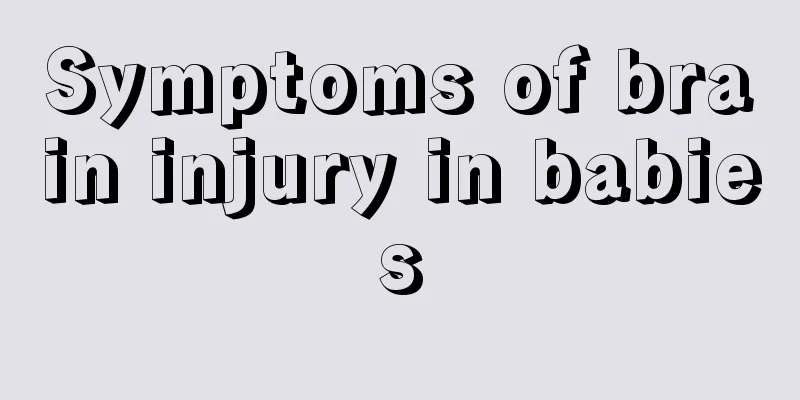
|
The brain skull of a newborn baby has not yet fully grown. If the parents do not protect the baby's head well, the baby is likely to be injured. Sometimes babies will have intracranial injuries, which are very dangerous and should be treated in hospital in time. If babies have intracranial injuries, there will be corresponding symptoms. Let's take a look at the symptoms of intracranial injuries in babies. Very early manifestations of brain damage (cerebral palsy) in childrenA detailed understanding and summary of some important symptoms of infants and young children in the early stage are as follows: 1. Newborns or infants between 2 and 6 months old are easily startled, vomit, cry and restless, have anorexia and sleep disorders; 2. Difficulty in feeding, eating, chewing, drinking, swallowing, etc., with drooling, respiratory disorders, and tracheitis-like wheezing; 3. Low sensory value, easily startled by noise or changes in body odor, and enhanced hug reflex; 4. If the child still cannot stand or walk with support after more than 90 days, brain damage (cerebral palsy) should be suspected; 5. After 105 days, the baby still cannot lift his head, and his head is still wobbly at 4-5 months; 6. If the child still clenches his fist, retracts his thumb, and does not open his hand at 4 months of age, brain damage (cerebral palsy) should be suspected; 7. Babies should actively reach out and grab objects when they see them at 4-5 months old. If they still cannot do so after 5 months, it is suspected that the baby has brain damage (cerebral palsy); 8. Children with spastic cerebral palsy have a dull expression, while children with athetoid cerebral palsy have a sad face. 9. Muscles are soft and unable to turn over; lower limbs are stretched and crossed; 10. Stiffness, especially when dressing, it is difficult to put the upper limbs into the cuffs; when changing diapers, the thighs are not easy to abduct (open);11. Children with cerebral palsy may experience "premature" rolling over, which is a sudden reflexive rolling over, with the whole body rolling over like a log, rather than conscious segmental rolling over; 12. Children with spastic cerebral palsy may have stiff lower limbs before sitting steadily, and may stand on pointe or cross their legs like a ballet dancer. Intervention for children with brain damage mainly involves providing appropriate information stimulation through the three main input pathways of the brain: vision, hearing, and skin sensation, and conducting functional training for the three main output manifestations of gross motor skills, fine motor skills, and language at a slightly earlier stage than normal motor development. In the neonatal period, when the baby is awake, you can use bright toys and the smiling faces of the parents talking to the baby to guide him to look in all directions. For those who have poor visual tracking, this aspect of training should be strengthened. The sound of parents' talking is the best auditory stimulation. You should talk to the baby many times a day. If the baby has poor auditory directional response, you can add sound stimulation such as noisy toys or plastic bottles with beans. Touching the baby's skin all over the body with warm hands and gentle massage can promote recovery from brain injury.Crawling training is an important method for rehabilitation of brain injury. American doctors have pointed out through research that the characteristics of the phylogenetic evolutionary process are repeated in the process of human individual development. During the baby's motor development from crawling on all fours to crawling on his knees and then to standing and walking, the corresponding brain development is from the pons to the midbrain and then to the cerebral cortex. Crawling helps the brain recover. Clinically, it has been proven that passive exercises simulating crawling can effectively promote the occurrence of crawling movements, correct incorrect movement postures, regulate muscle tone, improve sensory perception, and conduct training in sitting, standing, walking, fine motor skills, chewing, language balance, etc. in a timely manner according to developmental rules for brain-injured children who cannot crawl. It is also an important part of brain injury intervention and cerebral palsy treatment. It should be noted that no matter how much passive training is done, it cannot replace active movement. Doing everything possible to induce children to make correct active movements and talk more is the essence of rehabilitation treatment for brain injuries. |
<<: Why do babies not cry when they are born?
>>: How to treat whooping cough symptoms
Recommend
What causes heavy breathing in babies?
In the process of growing up, babies are actually...
What should I do if my three-year-old child stutters?
The healthy growth of children is the greatest an...
What should I do if my baby has sandy dermatitis? Parents should keep these methods in mind
If a child develops sand-related dermatitis, pare...
What to eat when your baby is suffering from internal heat
What mothers fear most is that something goes wro...
Reasons why breastfed babies have less bowel movements
In fact, it is very difficult to take care of you...
Can babies drink grapefruit tea?
Grapefruit tea is a drink that is deeply loved by...
What are the symptoms of precocious puberty in children?
Society is progressing, but what worries everyone...
What to do if your newborn baby catches a cold
Newborn babies are often susceptible to various d...
At what age do children usually start to lose their teeth?
As we all know, children need to change their tee...
Symptoms of fish bone stuck in throat in 8-month-old baby
Parents must be careful when feeding their babies...
Baby nutritious breakfast
Everyone knows that you should eat a good breakfa...
Baby's forehead is narrow
The baby's forehead is narrow near the top of...
Child's deciduous teeth caries
Dental caries will occur in many children. Becaus...
What are the dangers of teenage obesity?
As a growing generation, teenagers are the sun of...
How long does it take for a baby to recover from viral diarrhea?
Baby's viral diarrhea is caused by inflammati...

